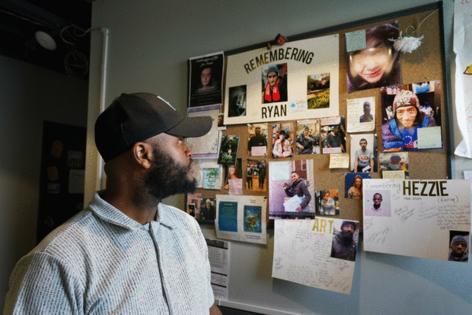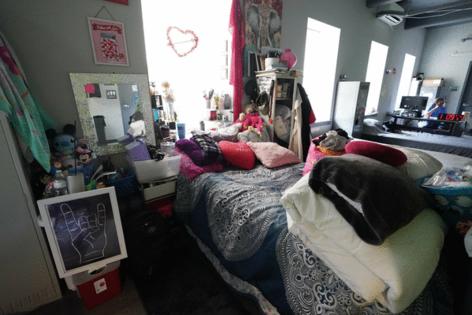This Philadelphia facility is one of the nation's lowest-barrier shelters for drug users. Some say it offers tough lessons for a city in crisis
Published in Lifestyles
PHILADELPHIA -- It was a few days after Christmas last year when Tarence got news that changed his fortunes. After three years of battling opioid addiction, sleeping in train stations or under the El tracks in the Kensington neighborhood, a bed was ready for him at Beacon House.
“It put the smile back on my face,” he said, grabbing a meatball sandwich in the shelter kitchen one afternoon in May.
Located on Temple Episcopal medical campus in Kensington, Beacon House is the city’s only shelter designed for people in active addiction, which boosters describe as one of the lowest-barrier shelters in the nation. City officials consider all contracted shelters “low barrier” and none explicitly require sobriety. But some shelters impose curfews and security screenings, while only allowing residents to stay for certain hours of the night.
In the three years since it opened, Beacon has become a coveted placement for people like Tarence — in large part, because none of those restrictions apply.
The shelter has helped more than half its residents begin taking medications to treat addiction and connected dozens with housing, even as some of its high-risk population can still fall through the cracks and disappear, from the shelter into the streets.
But as with other efforts to expand housing to one of the most high-risk populations in the city, neighbors who live near the shelter have complained about its proximity to their homes, citing open drug use and discarded needles. It’s a rift that highlights the broader challenges facing Mayor Cherelle L. Parker’s administration as it seeks to expand treatment options as part of her plan to stabilize Kensington.
Beacon residents and staff say the shelter gives people who live there time to focus on their next steps while providing them with support to navigate housing placements, drug treatment, and other social services. The stability — and lack of judgment — leads many to choose to enter treatment, even though it’s not required.
Prevention Point Philadelphia, the Kensington-based addiction services nonprofit contracted to run the shelter, said 56% of Beacon residents are enrolled in some form of outpatient treatment for substance-use disorder. And three years in, more than 30% of Beacon residents were placed in subsidized housing, while another 10% moved to long-term care facilities or another safe haven, and another 8% returned to live with family or friends.
Experts say that low-barrier shelters like Beacon remain rare at the national level.
“If we were actually crafting policy around what research and evidence shows is successful, it would be this type of model,” said Melissa Moore of the Drug Policy Alliance, a national nonprofit that advocates against punitive responses to addiction.
...continued
©2024 The Philadelphia Inquirer, LLC. Visit at inquirer.com. Distributed by Tribune Content Agency, LLC.










Comments